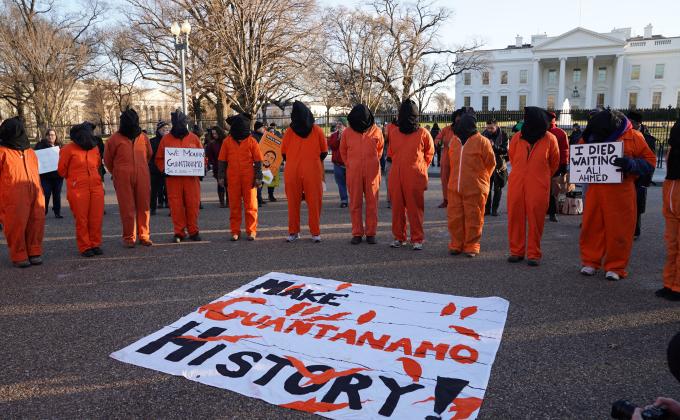This week, the trial began in Oslo of Anders Behring Breivik. Last July, he set off a car bomb outside Norwegian government buildings and opened fire on scores of teenagers attending a Labour Party youth camp on the island of Utøya, killing 77 people. Breivik no doubt hopes to use the trial to further publicise his cause. But it may also prove an opportunity for a closer examination of his views on multiculturalism and Islam, which are shared by many, both on the far-Right fringe and in the political mainstream.
In Breivik’s 1,500-page manifesto, 2083 – A European Declaration of Independence, published online on the day of the attacks, he provides an elaborate account of his ideology. Much of the document consists of advice to fellow far-Right terrorists on weapons, bomb-making, body armour, physical training and the potential use of chemical, biological and nuclear weapons. He claims to be a member of a secret group of new "crusaders" founded in London in 2002 by representatives from eight European countries, whose aim is to ‘free indigenous peoples of Europe and to fight against the ongoing European Jihad’. One section of 2083 describes the ranks, organisational structure, initiation rites, uniforms, awards and medals to be used by this secret "Knights Templar" group. These parts of the manifesto – and a section in which he interviews himself, narcissistically listing his favourite music, clothes and drinks – appear to be its only original content.
The bulk of the document constitutes a compilation of texts mainly copied from US far-Right websites. Its opening chapters are plagiarised from Political Correctness: A Short History of an Ideology, a book published online in 2004 by the Free Congress Foundation – a Washington-based lobby group founded by Paul Weyrich, one of the most influential activists of the US Christian Right. In this section, Breivik has replaced references to ‘America’ in the original text with "Western Europe". Apart from this, the writers Breivik cites most often are prominent "counter-jihadists": Robert Spencer, the American Islamophobic blogger whose Jihad Watch website, a subsidiary of the David Horowitz Freedom Center, receives close to a million dollars of funding from wealthy backers; Ba’et Yor, the Swiss author of the "Eurabia" conspiracy theory, which claims that the European political establishment is involved in a secret plot to facilitate Muslim immigration and transform the continent into an Arab colony; and ‘Fjordman’, a Norwegian, who blogs for the US-based Gates of Vienna and Jihad Watch websites. These writers are paranoid conspiracy theorists who claim Islam is a totalitarian political ideology that aims at infiltrating national institutions in order to enact sharia law. Like Breivik, they blame Western elites for pandering to multiculturalism and enabling "Islamic colonisation of Europe" through "demographic warfare".
This multiculturalist elite, says Breivik, has prevented the possibility of democratic opposition and the clock is ticking: "We have only a few decades to consolidate a sufficient level of resistance before our major cities are completely demographically overwhelmed by Muslims". Hence, he justifies his violence as "a pre-emptive war". In a 2007 blog post by Fjordman, entitled "A European Declaration of Independence", which Breivik reproduces and whose title he borrows, Fjordman writes: "We are being subject to a foreign invasion, and aiding and abetting a foreign invasion in any way constitutes treason. If non-Europeans have the right to resist colonisation and desire self-determination then Europeans have that right, too. And we intend to exercise it".
In the conventional neo-Nazi doctrine of "race war", whites are called upon to rise up against governments seen as secretly controlled by Jews and whose aim is to dilute white racial purity by enabling black immigration. Breivik reframes this doctrine by substituting culture for race, Muslims for blacks, and multiculturalists for Jews. Rejecting the "race war" concept, he calls instead for a "cultural war" in which "absolutely everyone will have the opportunity to show their loyalty to our cause, including nationalist European Jews, non-European Christians or Hindu/Buddhist Asians". Yet he also speaks of his "opposition to race-mixing" and wants "to prevent the extinction of the Nordic genotypes". Of Jews, he writes that "we must embrace the remaining loyal Jews as brothers" and that there is no "Jewish problem in Western Europe" as their numbers are small. He goes on to say that the UK, France and US do have a "considerable Jewish problem". Casting Jews as both potential allies (if they join in fighting Islam) and a demographic threat (if there are too many), Breivik is simultaneously anti-Semitic and supportive of right-wing Zionism.
It would be easy to dismiss Breivik’s beliefs as the ramblings of a man gone insane. But that would be to ignore the danger they represent. His case demonstrates that the new "anti-Islamist" far-Right is as compatible with terrorist violence as older forms of neo-Nazism. And, whereas neo-Nazism is a fringe phenomenon, anti-Islamism attracts wide support, including among mainstream politicians, newspaper columnists and well-funded think-tanks. The major theme of Breivik’s manifesto is the argument that multiculturalism has weakened national identity and encouraged Islamist extremism. As Breivik himself correctly noted in the first week of his trial, this view is held by "the three most powerful politicians in Europe" – Sarkozy, Merkel and Cameron. The uncomfortable truth is that the central plank of a terrorist’s narrative is shared by heads of Western European governments – an unprecedented situation that we would do well to acknowledge and reflect upon.








